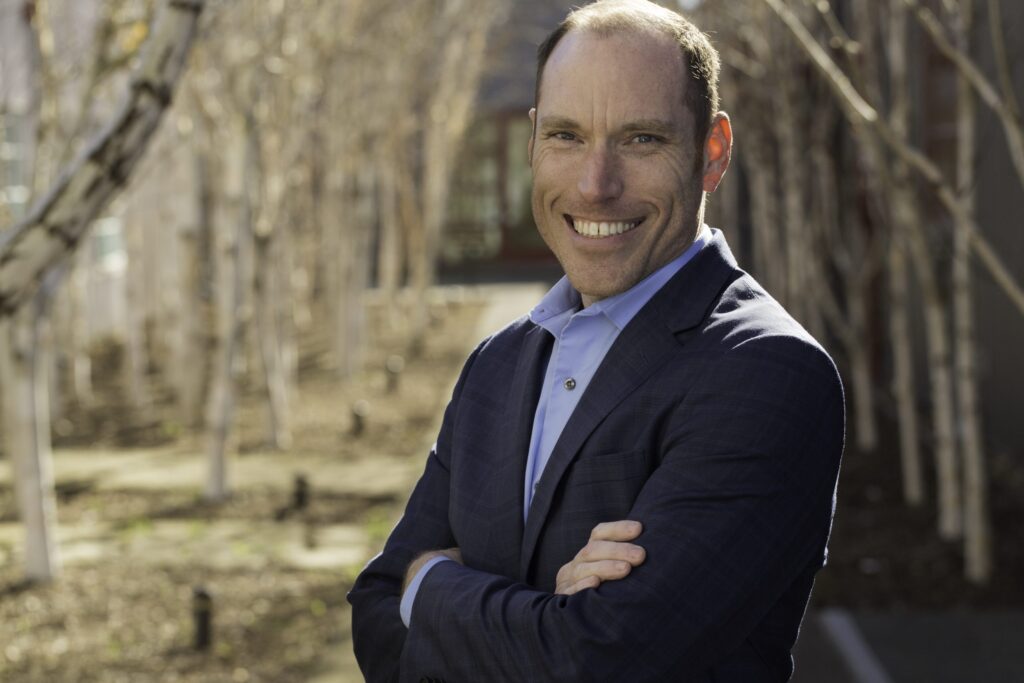In an environment where many, if not most, businesses are suffering, how does a company grow by 300% during a pandemic? Today’s guest made it happen, and he wrote a book about it. Listen in to today’s episode to hear Marylou interview Brandon Bornancin, the entrepreneur who founded Seamless.AI and the author of the soon-to-be-released book Whatever It Takes: Master the Habits to Transform Your Business, Relationships, and Life. Listen in to hear Brandon discuss what happened to prompt him to write his book, how his company grew during the pandemic, and why it’s important to go all out for success.
Episode Highlights:

- Brandon’s book
- What happened to Brandon that resulted in him writing his book
- What Brandon’s company did to grow 300% in a pandemic
- The daily and weekly rhythms Brandon’s company used to enact their pandemic plan
- The okay-hour system
- Going all out for success
Resources:
Whatever It Takes: Master the Habits to Transform Your Business, Relationships, and Life
Transcript
Marylou: Everybody, it’s Marylou Tyler. Today’s guest—I believe I’ve had him on the show already or I talked on his show, I can’t remember. Brandon Bornancin is an expert in this whole concept of growth. Growth can mean different things for different people, but he has taken something from nothing to greatness. Now, he’s working on taking something that’s great to even better and greater.
I wanted him to come to the show because he has a lot of life in him. He told me his birthday is tomorrow. He’s turning 35. He’s on the young side for some of us, but he’s been doing the types of things that some people don’t even accomplish or get to even witness in their lifetime. I wanted him to come on and talk about a couple of things.
One, his company and how that has transitioned through what we’re going through right now—a pandemic, and it’s affected a lot of people, plus or minus. In his world, it has blossomed. His company has grown quite a bit. I want him to discuss how he’s been able to transform his business in light of the pandemic.
That experience has also motivated him to write a new book. The book is called Whatever It Takes: Master the Habits to Transform Your Business, Relationships, and Life. This book at the recording of this podcast is available via pre-order. In case you guys want to run out and get it right now, it’s not there, but you can go to Amazon and click on pre-order. I’m sure he’s going to have some great things for you in terms of bonuses and things like that, but I wanted to get him on the show. Brandon, thank you so much for coming on the show today. It’s nice to finally connect. It’s been a while.
Brandon: Thank you, Marylou Tyler for taking the time to have me on the show. It was awesome to have you in my latest book, Sales Secrets, which hit the number one bestseller last week. It was awesome. Your interview was amazing on Predictable Prospecting. Thanks so much for being here. I’m excited to share a little bit about my new book, Whatever It Takes.
Marylou: As we were talking the pre-talk (I call it), we were sharing the fact that this book was birthed out of your folks, your team saying we need to share this with the world. What happened to you over the last year that culminated in this book being written in as little as to what? You said 22 days?
Brandon: Yeah, it was 22 days. I remember like it was yesterday. My COO and I were sitting at a table and we’re watching the news. What’s going on, the governor’s coming on. This is early March. I live in Columbus, Ohio, and I’m eating and talking with my COO, and it’s 8:00 PM, 9:00 PM, 10:00 PM. We’re on the phone, hitting the buttons, and calling our investors.
Our investors are calling us, hey guys, what’s the game plan? How are you going to survive? What are we going to do if the country shuts down? How are you going to make it? Employees are calling us, what do we do? People are projecting that the country is going to shut down, offices are going to shut down. Are our jobs secure? Is our livelihood secure? Are you going to do layoffs? Are we going to open the office? Are we going to close the office?
We were sitting at the dinner table just working until midnight, Danielle and I. That evening, the governor of Ohio came on. By the way, the week before, we were in the middle of signing a 25,000 ft2 beautiful, brand new, amazing office space. We’re in the middle of this office space negotiation, investors are calling, customers are calling, our employees are calling, and we’re tied to the news trying to figure out what is going on with this thing called COVID and the pandemic.
The governor comes on, shuts down the whole state. Complete lockdown, shut down, everyone’s freaking out. The news is freaking out. The press is freaking out. Employees are freaking out. Our customers are freaking out. Investors are freaking out. My management team and I, luckily, built a few different companies in our past since we were 18, and my father built the first billion-dollar B2B software company in the US. We just do whatever it takes to be successful.
Throughout all this chaos, I’m like, I have to write down all the beliefs, the mindsets, the habits, the strategies that we have to leverage as a company to survive and thrive in what I’m projecting to be a 24-month challenge in this country. It inspired me to write out how to prepare for a pandemic or crisis. The mindset you need to overcome the crisis and be successful, the habits you need, and the secrets you need to leverage. I wrote it all out, took me about 22 days, and it ended up being 300 pages—just every morning.
By the way, the country shuts down. Now I’ve got more time. I’m not going to the gym, I have to work out at home. I would just wake up at 4:00 AM, write for three hours, then work out in my garage, and then get to work. I didn’t realize how much I was able to write and knockout, but I really wrote this book, Whatever It Takes, to highlight everything that you need to transform your business, relationships, and life to be successful no matter what condition. Good or bad, crisis-no crisis, failure-success, rich or poor—you name it. Everything in this book highlights that.
We use this book internally at our company called Seamless.AI, and we used it to grow 300% this year. Investors are like, what the hell are you doing? This is magical. We went from 20 employees to 125 employees, and we’re trying to scale to 500 employees. My team was like, Brandon, this changed our lives, this helped us grow, this made the impossible possible, you should share it with the world. Now I have already wrapped up two of my books—Seven Figure Social Selling and Sales Secrets—I was like, yeah, let’s do it. It’s on Amazon now for pre-order, and it’s coming out on January 5th.
Marylou: You mentioned a couple of things that I want to highlight for the audience. One is you grew 300% in a pandemic when most companies—mine included—all of a sudden, a channel of conversation was taken from us. What I’m talking about is the telephone because we did not have direct dial information. We had brick-and-mortar numbers inside of our database. Overnight, we lost a viable channel for us to generate opportunities.
When this was all happening, where did you pivot? Did you have to pivot in your approach? I’m assuming this 300% growth is primarily market share, net new logos, and not necessarily the base or expansion. How did you get your arms around that piece of it? Was it something where you had to end up pivoting in some of the ways that you sold?
Brandon: The foundation of it all was really around first preparation and mindset for our team, for our company. If you’ve got the right preparation, expectations, mindset, belief systems, you can do anything in this world. You can accomplish anything regardless of the challenge, life-or-death situations even.
I launched my first company at 18 that did $12 million in sales, and a lot of the habits that I highlight in this book, I learned from doing that. And then I launched a second company during the financial crisis of 2007, 2008, 2009. I got my ass kicked, the company went out of business. I learned everything that I did wrong from there, then sold, and went from $0 to $100 million in sales for IBM and Google, and then building Seamless.
I just learned all of these core values, these beliefs, these habits, these secrets, all about preparation, all about mindset. The preparation, the first core value is doing whatever it takes. The next secret of preparation is breaking your bullshit belief patterns. Literally, the chapter is titled Break Bullshit Beliefs on both internally and externally, and then the mindset is all about defining your destiny, going all out, and never quitting.
The habits are all about doing what the top 1% do—find solutions, take ownership. Then the secrets—doing the right thing, protecting your dream, and taking massive action. Also, luckily, I had a product—like you had mentioned, Marylou—Seamless finds everyone’s cell phones and emails from around the globe. When everyone went remote, our product was definitely an increase in demand. Although I would argue no matter what, you should be trying to call people on their cell phones, emails, and phone numbers—you name it. If you could get a one-to-one direct versus going the corporate company phone route, it’s always the fastest route to go.
But when everyone went remote, we saw a 2% increase in growth rate from changing nothing. That’s a month over month growth rate. The month over month increased by 2%, you’ve got compounding interest, but 24% increase. If you try to […] out and just multiply it by 12. And then if you apply everything that I teach in this book, Whatever It Takes, you just saw us growing 10%, 20%, 30% a month, and it increased our growth rate. We increased revenue results by 300%.
Marylou: What really strikes me are two things. One is that you have a process for mindset and habit, which I love that idea, but the next thing is you have a team who bought into this and executed the plan. What is it about the team at Seamless that you were able to do this, given all the uncertainty? It’s been very stressful for everyone worried about their livelihood, the future. How did you get them to, all right, people, let’s gather and start working on the plan? What were some of the daily rhythms or weekly rhythms that you deployed in order to act out your plan?
Brandon: Great question. It’s a really good question. Right away, we had an emergency company-wide meeting. No disrespect, massive companies, super successful—when I sold for IBM, if anything was going wrong, it was hidden from you for months or years and then […] would hit the fan—layoffs, whatever. Selling for Google was a little bit different. It was high transparency. When things change or problems come up, they talked about it a lot very quickly. The exact opposite of what I experienced at IBM.
When I launched Seamless, I tried to take all the great things about IBM, all the great things about what I learned from selling for Google, try to remove all the bad things from both of those, try to remove all the bad things, the mindset, and beliefs from running my own startups to build this once in a lifetime culture. Our whole team embodied our core values which are highlighted in this book. But the first thing we did, a big core value is just taking massive action, and we knew that right away, things were going to get worse.
I had this emergency one-hour meeting, and I had four hourly emergency meetings with our company and with all of our users. I’ve got 120,000 salespeople, marketers, and entrepreneurs on Seamless. I did this whole pandemic recession master class for our company, for our users to tell them like, look, it will take 300%-500% more activity, more energy, more money, more time, more failure to produce the exact same results that you were generating in January and February.
Guess what? It will suck, it will be painful, it will be […], but right now, what we need to do is embrace the pain, embrace the suck, embrace the […] of this situation, and rise up above it because if we don’t, guess what? The company could go under, we could all lose our jobs, our customers could lose their jobs, could lose their success—you name it. We have no option.
Is this all-in, all-out? Here’s the reality, no one is going to tell you this reality. And we just spoke the hard truths of what we’re going to experience. The governor shut down Ohio, the next day we’re having an emergency meeting. This is how bad it’s going to get. No one’s going to tell you it’s going to get this bad. This is going to be a 24-month thing. It’s going to take us 300%-500% more work. You don’t get paid more. We’re all going to have to put in 300%-500% more work and pray that all of that hard work will create security, success, and results so that no one loses their job, we don’t have to do anything—you name it.
That was one of the core values—projecting the right way—because forecasting it’ll be the exact same work that it was before the pandemic. After the pandemic, you’re going to drastically underestimate the amount of work, effort, time, money, capital, resources, energy, and failure that you’re going to experience. That was the big mindset shift we had everyone bought in on. We had to buy everyone in to go all-out, to never quit, to find solutions, not problems. The whole world is going to be talking about problems 24/7. Don’t listen to negative people. Don’t look for problems. Don’t try to search for problems, find solutions. Take ownership of your domain, protect your dream, protect your dream, take action, do the right thing—you name it.
With these four emergency meetings, highlighting everything that I highlight in the book—each chapter, the whole team came around. We had zero layoffs, zero salary cuts. We gave out probably 50 promotions. We grew the employee base by 5X-6X, we won LinkedIn Top 50 Startups. We won the number one Best Places to Work. I say these things not to stroke my ego. I don’t give a […] about my ego. I say it because if you buy into the habits, the beliefs that can transform your life, your business, and your relationships, and you use them, and you apply them, you will be able to survive and thrive.
Marylou: Plus you left open though for the folks that may struggle and take two steps forward, one step back, which does happen. You gave them permission to voice their concerns, and that is another issue that I see a lot of is they fester over time—if we’re not addressing right or wrong, fiction or fact—what’s going on in that head of yours, and how can we help turn that around.
The team approach to improvement, knowing that there’s going to be some areas that we’re going to fall down on, and I can share with the team here with our listeners, we had the same issue. But what it gave us was the opportunity to think outside the box a little bit. We were cut off at the knees with a channel that was giving us a 40% response rate, and we went down to zero in one night. Our team looked at this as, all right, pick yourself up, brush yourself off, and figure out another way to do this. It was breathtaking how everyone took on this extra opportunity (we called it), and figured out how we can leverage the other channels of communication to get to our goal.
Brandon: Yeah, 100%. We also did different things too that helps. We did immediate daily standups. We took the whole company remote in 24 hours. Luckily, I launched the company with my management team and I out of my house. We worked out at my house. We got up to 10 employees out of my house, and then the HOA was kicking us out of my house.
While we were building this search engine that could find emails, cell phones, and insights every person in the world that you need to sell to—to build Google for sales, it took us a few years to build. We’re out of my house, we’re bootstrapped. No one would give us money because we’ve got a prototype and they’re like, we want to see you build it, we want to see you sell it—you name it. That’s the reality of building any company if you’ve got no connections like I did. If you have no hotshot VCs like I did, you have to just be scrappy, you have to do whatever it takes.
We were remote-first for a few years. Then we got a big office, we outgrew the office. The office got shut down by the government. Luckily, it saved me a week before sending a 25,000 ft2 office lease. Their lawyer blew that deal, by the way. We were trying to push to sign this 25,000 ft2 massive office space. It was very much like a Google here in Columbus that we were going to build a campus and office space in. The lawyers took an extra week and it saved me a lot of money.
Marylou: Silver lining there.
Brandon: Yeah, exactly. But what we did was we instituted daily standups. We went 100% remote right away. We instituted daily standups across every team. Every morning at 5:00 AM or 6:00 AM, I post a daily motivational message. I highlight the KPIs. I highlight the success. I highlight the positivity and momentum we’re building. For the past year, every day I’m posting. Keeping up the momentum, keeping up the positivity, keeping up the energy, keeping people recognize the flywheel.
We also created a ton of Slack channels. We have customers’ success stories channel, success book channel, and success thought leadership channel. Anytime you see anything good about our platform, anything good about our work, anything good about anything—we would post screenshots of that stuff in these Slack channels so that the team could keep seeing, yes, we’re working 200% harder, 300% harder, but our jobs are secure. We’re winning, we’re growing, we’re scaling, we’re changing the world, and we’re helping the world—a lot of these things. I had to basically break everyone down and that’s why the first chapter and the first tip is you have to break your […] beliefs.
About 1% of top performers do not let other people’s opinions and beliefs hold them back from living the life they want. I had to breakdown our entire company, all of our employees, what their belief systems were because I knew it would get terrorized by the news, by their family, by their peers, by their partners, wives, husbands because everyone’s going to be in a state of fear and this craziness with the pandemic, COVID, life or death.
I’m like, how do I make sure that these people have the right mindsets, beliefs, and patterns? I got to break them down, build them back up, got to have them develop this constructive paranoia. Where extreme constructive paranoia that everything could be taken from us at any given point in time. No matter what, it’s critical for us to stay humble, stay hungry, and be the hardest working people in the room every single day of the week, in the industry, in the SaaS space. We have to stay humble, hungry, hardest working people in the room and assume that she could get bad quickly.
Then worked with everyone to eliminate bullshit excuses, don’t buy any get-rich-quick schemes. And when I say get-rich-quick schemes, not only do I mean real get-rich-quick schemes, but also life will be good here in a day or two get-rich-quick schemes. I wanted people to understand how bad this was going to be. If you understand this is going to be a two-year marathon, then you could stop worrying about the past or present and you could go create the future.
Marylou: Yeah, and develop that endurance. My body of work—prospecting, is all about that endurance muscle for prospecting, it comes over time. I love your idea of the standups. We instituted a daily okay-hour which is similar to your stand up, its objectives, and key results. We would meet in the morning and set the tone of what we hoped to accomplish. What we bought in to accomplish that day. Then we would check in with each other in the evening because we, all of a sudden now—even though we’re remote—we had these tools we used. First, we use Zoom, and then when Zoom had this little hiccup, we had to switch over to a different service because we are a very secure-oriented company.
We did that and it was amazing. First of all, to see everybody’s houses—because I was in people’s kitchens, I was in people’s bedrooms, people’s closets depending on whether they had kids or not. It was just a humbling experience. We felt a high sense of camaraderie. I can’t explain it, but we all got so much closer because we’re all in the same boat. This thing is affecting everyone at every level, we’re all struggling with it, and that also brought us closer together, but with a structured process like the one you’re talking about from Whatever It Takes, from the new book. It’s like a blueprint of how to navigate through these situations that we don’t have any control over. We really don’t.
Brandon: I love that you implemented okay hours, what a great system to implement. Being from Cleveland Rockefeller habits follows the okay-hour system and that’s been one of the key pillars of my success. We track everything daily, daily tracking of all of our metrics. You’re one of the smartest sales engineer gurus I’ve ever met, Marylou. You had a big impact on me launching multiple companies and being successful—going from $0 to $100 million in sales, selling for IBM and Google. You have to leverage the data. Every day, we got to analyze the data.
Your attitude and how you embrace times of adversity—and this is in the book—will mentally make you or break you. The best part about that is you get to decide. Your attitude on how you embrace these times of adversity could be great and they could be terrible and crush you. And when you decide that you’re going to make them great, when you treat rejection—and I know you love data, I call it—when you treat rejection as the data needed for ratification to be successful. I talked about it in the book how I pitched hundreds of venture capitalists. I pitched 347 VCs. Can you believe that?
Marylou: Yes, I would believe that, Brandon.
Brandon: 347 VCs, 297 of them passed on me. But guess what, every time someone passed, that rejection—your market is not good enough, your idea is not good enough, your team is not smart enough, you don’t live in San Francisco, you didn’t go to MIT or Harvard, your development background isn’t as strong as we want it, you’re not good enough. All of this data you use to optimize—A/B testing, you keep improving, and the rejection data, the data from failure allows you to fast forward to where you need to grow and where you need to go.
That propelled into this theme of never quit. I call it […] quit in the book. It’s a little vulgar, sorry, but you need to go all out. You need to be vulgar with your success. You need to be unsatisfied, relentless with what you need to do right now. The only way that we grew 300% during one of the worst economic times of our history is because we went all out, and that’s critical to do and get to find solutions and not problems. All of these things were a big pillar to it.
Marylou: One of the biggest messages here, and I remember my father telling me, it’s about choice. He used to tell me the story of the Blue Bird School Bus. If the Blue Bird School Bus took a left-hand turn at the factory, it became a school bus. If it took a right-hand turn, it became this fabulous home-on-wheels where they outfitted it with all the top everything so that you could power that thing around the United States and have a complete living environment—a kitchen, bedrooms, a shower that was chartreuse in color. It was just fabulous home-on-wheels.
He said Marylou, that’s how life is. You can choose to go left or right and it’s up to you though, to make that choice. That stuck with me forever and I do believe that you’re embodying that whole process of we can choose where we’re going. Yes, we have some baggage. Yes, we have some history. Yes, we have some childhood things that we want to overcome and need to at least make peace with. But at the end of the day, we’re in the driver’s seat. We can decide where we want to go, how we want to get there. There’s a whole community of people like Brandon out there, like myself, who want to help you get there, who are just cheerleading you on to get to that point. But you’ve got to take that first step.
Brandon: Yeah, 100%. Anyone tuning in listening to this show right now. You commit to constantly growing and improving you’re going to win. Perception is reality and if you can believe you can achieve, and why as a salesperson, entrepreneur, I write this book about mindset beliefs. It’s almost like dieting. If you want to lose weight, diet is 90% of it. In Pareto’s Law, 80/20 Rule.
I would say if you want to join the top 1%, if you want to become a millionaire in sales like I have and built multiple 8-figure companies—and again, I don’t say that to brag because I score myself on a scale of 1-10, a 1—you need to just go all out believing that you can achieve and perception is reality. If you improve every day, you believe that you could do it, you go all out, you have the right mindset, and you do whatever it takes, you can define your destiny.
Marylou: Sometimes it’s micro-steps and some days it’s big leaps. But there’s always a forward movement. Even the failure is forward. I loved your analogy about failure because one of the best learning experiences for me as a consultant going into clients is to look at their closed loss. Why did we lose? Because there are so many lessons in there as to how we can improve for the next person that comes through our door, or they were able to start a conversation or continue a conversation with. That’s a very important thing.
The other thing is you got to put that ego in your pocket—self-doubt, also ego, also the things that are holding you back. That little person on your shoulder says, maybe you shouldn’t take a risk. In a lot of situations, the risk is good as long as it’s a healthy risk and you’re not doing things that are going to completely obliterate whatever it is that you’re working towards. But there’s always a level of risk in everything. Allow yourself and give yourself permission to take on risk at your pace because like you said, the tiny behaviors are the ones that lead to remarkable results. That’s in your book.
Brandon: Yeah, 100%. If you can master doing Whatever It Takes, everything in the book, that’s 80% of being successful in sales, marketing, entrepreneurship, and demand generation. You can’t leave someone who never gives up and in life, you’ve got three choices. Choice number one, you could give up. Choice number two, you could give in—the pandemic, the recession, the economy, that’s getting destroyed is also going to destroy me. Or choice number three, you could give it your all and you get to choose. But I always recommend going with option number three. You will never regret giving it your all even if you fail.
Marylou: Highly recommend option number three.
Brandon: Yeah, 100%.
Marylou: The book is Whatever It Takes: Master the Habits to Transform Your Business, Relationships, and Life. It’s on Amazon. It’s pre-order. Please consider doing that. It’s a great book and then I’ll put, Brandon, all of your contact information on my website page. It’ll have your beautiful picture and all your connectors. Those of you who are hearing this underlying current of Seamless. I would definitely check out that company because yes, it gave you what we didn’t have, which is the ability to reach people at the best time and also the best number or the best location.
Brandon, thank you so much for your time today. I really enjoyed the podcast.
Brandon: Thank you so much for having me on, Marylou. I appreciate it. You’re someone that’s changed my life forever for the better with your work. I hope everyone tuning in that you learn something from this book or from this podcast that can help you do the same to make this next year your biggest and best yet. Please feel free to connect with me on LinkedIn. Also, I post daily sales strategies at seamless.ai. You could join Seamless for free at seamless.ai. That’s seamless.ai. Thank you so much for having me.
Marylou: Wonderful. Thanks again, Brandon. Take care.









